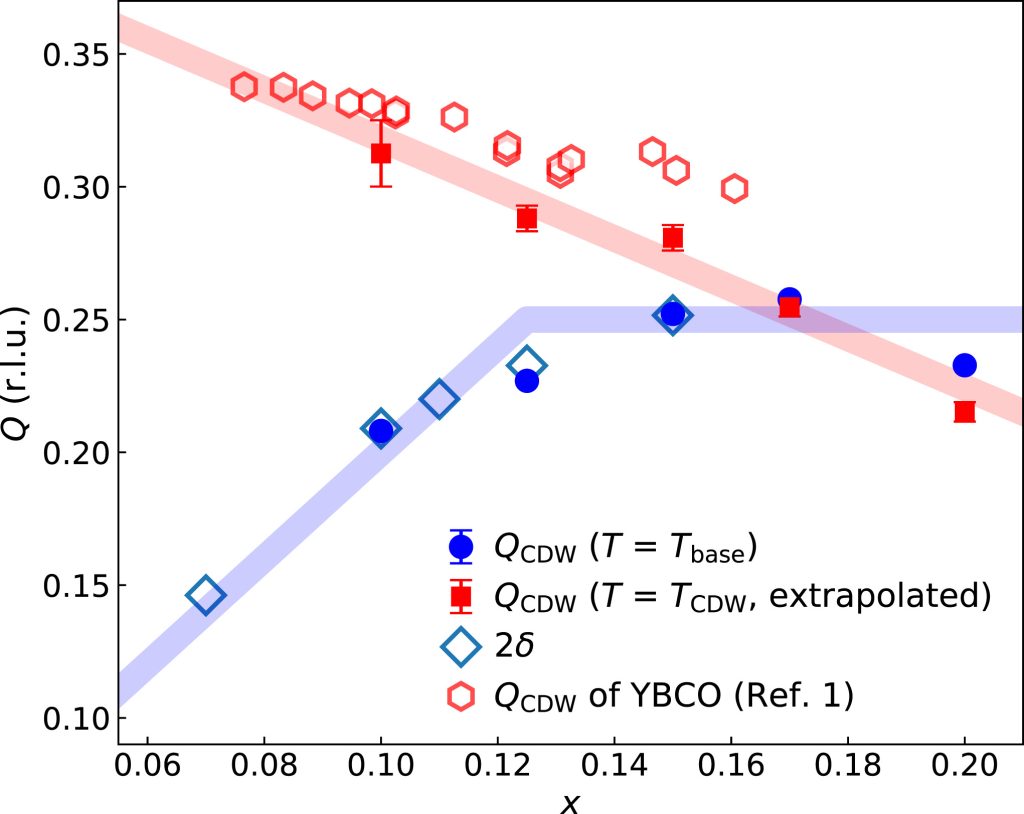A common mechanism for CDW order in all copper-oxide superconductors
Our latest collaboration with Eduardo Fradkin, Greg MacDougall, and Steve Kivelson, among many others, explains the widely varying CDW behavior across all families of copper-oxide superconductors. Using resonant soft x-ray scattering (RSXS) and neutron scattering, we studied a high-temperature superconductor, LESCO, that, at low temperatures, displays the characteristics of YBCO and Bi-based cuprates (blue line), while at high temperatures it exhibits behavior akin to La-based cuprates (red line). See the figure below, which shows the charge density wave (CDW) wavevector, Q plotted against the doping.

Using a Landau–Ginzburg theory including effects of charge compressibility and spin order, we were able to explain the full range of distinct behavior observed across different families of cuprates, showing all such effects have a common origin.
This study was led by Sangjun Lee, and Edwin Huang, who did x-ray, neutron, and Landau studies, respectively.
You can read the full article here.
Comments - No Responses to “A common mechanism for CDW order in all copper-oxide superconductors”
Sure is empty down here...